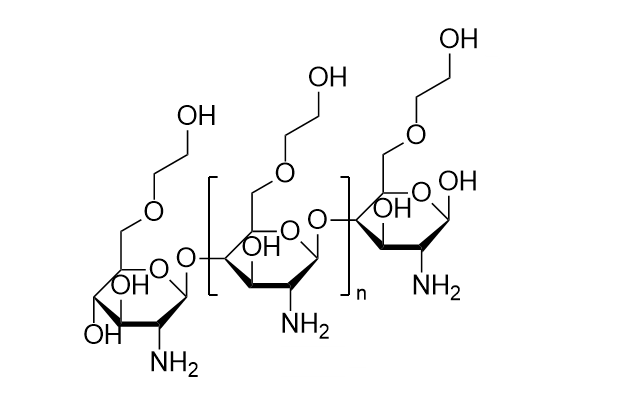Shopping Cart
Remove All Your shopping cart is currently empty
Your shopping cart is currently empty
Glycol chitosan, a chitosan derivative with hydrophilic ethylene glycol branches, inhibits E. coli, S. aureus, and S. enteritidis growth (MICs: 4 μg/mL, 32 μg/mL, and <0.5 μg/mL), and enhances membrane permeability and leakage in Glycine max [Harosoy 63W] cells.

| Pack Size | Price | USA Warehouse | Global Warehouse | Quantity |
|---|---|---|---|---|
| 100 mg | $40 | In Stock | In Stock |
| Description | Glycol chitosan, a chitosan derivative with hydrophilic ethylene glycol branches, inhibits E. coli, S. aureus, and S. enteritidis growth (MICs: 4 μg/mL, 32 μg/mL, and <0.5 μg/mL), and enhances membrane permeability and leakage in Glycine max [Harosoy 63W] cells. |
| Targets&IC50 | S. aureus: 32 μg/mL , S. enteritidis:<0.5 μg/mL , E. coli:(MIC)4 μg/mL |
| In vitro | The hydrophobic modification of Glycol chitosan has been validated, with derivatives such as Glycol chitosan with a 5β-cholanic acid moiety and deoxycholic acid-Glycol chitosan, capable of self-assembling into nanoparticles, demonstrating potential as carriers for hydrophobic drugs and genes [2]. Glycol chitosan can be covalently bonded with hydrophobic drugs to create amphiphilic compounds that form nanoparticles (NPs) useful in cell imaging and drug delivery. These derivatives are effectively utilized to transport antimicrobial and anticancer agents, employing either physical encapsulation or chemical conjugation methods. Glycol chitosan derivatives are advantageous for cell imaging and drug delivery due to their exceptional tumor-targeting capabilities stemming from the enhanced permeability and retention (EPR) effect, minimal cytotoxicity, chemical modifiability, high biocompatibility, and degradability [1]. |
| Cas No. | 123938-86-3 |
| Relative Density. | no data available |
| Color | Yellow |
| Appearance | Solid |
| Storage | Powder: -20°C for 3 years | In solvent: -80°C for 1 year |
| Solubility Information | H2O: 7.5 mg/mL, Sonication is recommended. DMSO: 11.67 mg/mL, Sonication is recommended. |
| In Vivo Formulation | 10% DMSO+40% PEG300+5% Tween 80+45% Saline: 2 mg/mL, Sonication is recommended. Please add the solvents sequentially, clarifying the solution as much as possible before adding the next one. Dissolve by heating and/or sonication if necessary. Working solution is recommended to be prepared and used immediately. The formulation provided above is for reference purposes only. In vivo formulations may vary and should be modified based on specific experimental conditions. |
| Size | Quantity | Unit Price | Amount | Operation |
|---|

Copyright © 2015-2025 TargetMol Chemicals Inc. All Rights Reserved.